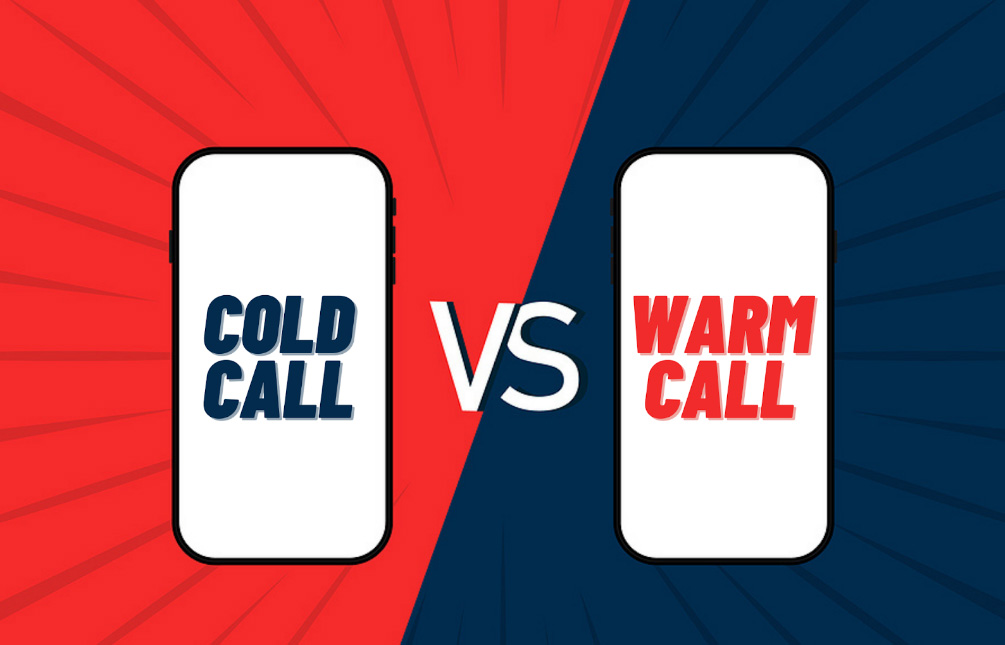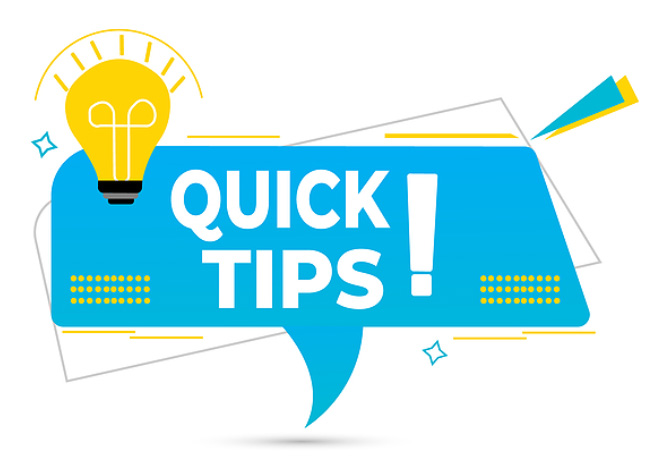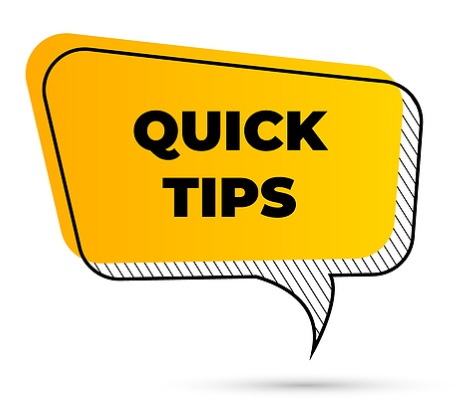Written by Sean McPheat | 

The age-old debate of cold calling vs warm calling has been a topic of discussion amongst sales professionals for years. But which calling strategy is better?
Cold calling and warm calling both have their advantages and disadvantages, and it is very important to choose the right approach to help make a significant impact to your sales.
In this article, we’ll explore the basic definitions of ‘warm calling meaning’ and ‘cold callers meaning’, whilst looking at the advantages and disadvantages of both calling strategies (as well as some handy tips) to see which one comes out on top and would be the right fit for your business.
Contents
Cold calling involves making unsolicited contact (usually by phone, but the term can also include door-to-door interactions) with another person. In other words, you reach out to them even though they’ve never interacted with your business previously.

In sales, specifically, cold calling involves contacting potential customers to introduce them to your business’s products or services and encourage them to invest.
Many industries rely on cold calling as part of their sales strategy, including the banking, insurance, and travel industries.
In most cold calling examples, the salesperson uses a phone number lookup service to reach out to random people. When someone answers, they then present a sales pitch about their business.
Door-to-door salespeople also use an in-person version of cold calling. They go from door to door, knocking and waiting for someone to answer. Then, when they get in front of a homeowner, they greet them and begin pitching the business’s products or services.
Cold calling is not as popular as it once was in the sales world. However, it still has its benefits, including the following:
One of the top reasons why sales teams still use cold calling is that it helps them learn more about prospective customers or clients.
You can learn a lot through online research. At a certain point, though, you need to pick up the phone (or contact the prospect in-person) and hear from them directly.
With just a brief phone conversation, you can gain more insight into the prospect, their interest in your product or service, and the likelihood that they’ll eventually invest.
Some people are surprised to learn that they’re more likely to get a response from a cold call compared to other communication methods like email. For example, one UK business’s study revealed that 16 percent of workers fail to keep up with their emails, and 43 per cent can’t get through their email inbox in one day.
Because phone calls are not as common as they once were, you may be more likely to connect with an actual person by cold calling regularly.
When you make a cold call, you’ll get instant feedback from the person on the other end. Even if it’s negative feedback (prepare to hear “no” or be hung up on while cold calling), that’s still information you can use to your advantage.
Cold calling allows you and your sales team to connect with prospective customers from all over the country (or even the world). The only limit is the number of people you can call in a day. Keep in mind, too, that you can also utilise cold-calling software to automate the process and connect with even more potential customers or clients.
Cold calling is also a highly cost-effective sales strategy. Although it can be time-consuming, it doesn’t cost much for sales team members to place phone calls and connect with prospects.
Even if you rely on cold calling software, you can still save money. Many solutions are highly affordable and provide significant returns on your investment.
Of course, cold calling also comes with some downsides. Here are a few disadvantages to keep in mind:
One of the most significant drawbacks of cold calling is that your prospects may find them annoying.
Many people don’t like to be called out of the blue, and if it’s not a good time for them to talk, they might not respond well to your pitch. They also might not respond at all.
It takes time to place phone calls and pitch your products or services to prospects over and over again. You also have to hear a lot of “nos” before you get a “yes.”
The more calls you make, the more likely you are to eventually get a positive response. You have to be persistent, though, and commit a significant amount of time to the process.
Cold-calling results are often unpredictable.
You might get on a roll for a while and get lots of positive responses in a row. However, your luck can run out at any time, leaving you with a series of back-to-back negative responses.
The inconsistency of cold calling can be frustrating for some salespeople. The process requires a great deal of patience and resilience.

Do you think the benefits of cold calling outweigh the negatives? If so, you might want to incorporate this practice into your sales strategy. These cold-calling hints can help you and your team see better results from your efforts:
Remember that your prospects are busy people. They don’t have endless time to hear you wax poetic about your business’s products or services.
You need to get to the point as quickly as possible to increase the likelihood of getting a positive response.
Let’s say your company sells air conditioning units. Don’t start the call by explaining who you are and what your company does. Start by explaining that you want to help them get through the hottest part of the year.
It’s normal for the person on the receiving end of the call to have questions about the products or services you’re selling. After all, if they’re going to commit to buying something, they need to know precisely what it is, how it works, and how it’ll benefit them.
Be prepared for these questions, and make sure you have concise answers readily available. If you don’t seem like you know what you’re talking about, the prospect is unlikely to trust you and move forward with a purchase.
Asking the right questions is a critical part of building relationships and making sales. When engaging with a prospect, be sure to ask open-ended questions.
For example, you might ask them if they’re happy with the amount they’re spending on a particular product or service. Then, depending on their response, you can adjust your pitch to demonstrate why your offering is a better choice.
Some salespeople are so excited about the products or services they’re selling that they talk more than they listen. This tendency is understandable, but it can also be a turn-off to your prospects.
Make sure you’re actively listening. That means hearing what the prospect is saying and reading between the lines to interpret the meaning behind their words. Active listening shows the prospect that you care and genuinely want to help them.
It doesn’t matter how good your memory is. If you don’t take notes during your cold calls, you’ll miss important details that could help you improve your future results.
Take notes on each prospect you contact. These notes will help you remember whom you reached, what you discussed, how interested they seemed in your product or service, etc. You can then reference that information when you follow up with another call or email.
If someone doesn’t answer your call, leave a voicemail explaining who you are and why you contact them. Keep your voicemail as brief as possible, though. If it’s too long, the prospect might delete it altogether, meaning you’ll have to start over from square one the next time you reach out.
For more support on this, check out these tips on how to leave a voicemail that gets returned.
Call people when they’re most likely to pick up the phone.
Think about it. The average person is busy during the mornings and afternoons, Monday through Friday. They have jobs, or they’re busy shepherding their kids from one activity to the next.
If you call during these times, you’re more likely to get sent to voicemail (or get a negative response if they do answer).
In general, it’s better to make cold calls around 11-12, when people are likely to be on their lunch breaks, and around 5 pm, when people are done with work for the day.
Take note of when people respond to your calls, too. For example, if you notice that you get better results at 3 pm than at 9 am, consider scheduling your calls with those times in mind.
The most successful cold callers are persistent. They aren’t afraid of hearing multiple “nos” before getting to a “yes,” and they don’t get discouraged by negative or rude responses.
If you stick with it and continue making calls (while also refining your strategy, of course), you’ll eventually start to see results.
At the same time, though, you need to know when a prospect simply isn’t interested in what you’re selling. If someone has said “no” multiple times or asked you not to contact them again, you must respect their request.
If you continue pestering them, you won’t change their minds. In fact, they’re more likely to double down on their negative view of your business.
These days, warm calling is more common than cold calling. This strategy involves contacting prospects who are already familiar with your business.

Warm calling in sales involves reaching out to people who have already connected with your business in some way and are more likely to become paying customers.
An example of warm calling in sales might be when you’ve previously called a prospect, and they requested you call them back at a later date. When you reach out again, they’ll remember you and, ideally, be more prepared to have a productive conversation.
Another example would be a salesperson communicating with a prospect via an inbound lead nurturing campaign. At a certain point, the lead will be ready to move further down the sales funnel, and that’s when you might reach out and make a phone call.
There are lots of reasons to include warm calling in your sales strategy, including the following:
One of the most significant perks of warm calling is that you’re connecting with people who are already in your company’s sales funnel. Perhaps they shared their phone number with you when they downloaded your lead magnet.
Regardless of how they entered the funnel, they know what your business is and have at least a general idea of the products or services you offer. They are also more likely to engage with you when you call.
Cold calling turns some people off because the messages can feel overly scripted or robotic.
With warm calling, you know more about the person on the other end of the phone. As a result, you can customise your message and make it more tailored to each recipient.
This customisation, in turn, can contribute to better relationships with your prospects.
Speaking of relationships, warm calling offers additional opportunities for relationship-building. For example, you can highlight common interests during the call and explain the unique ways that your product or service would benefit each prospect.
You can also ask more questions and gain more insight into your prospects, which can make follow-up messages more personal and impactful.
Because the recipient of a warm call is already familiar with your business, you don’t have to spend as much time educating them while connecting.
Rather than committing several minutes to explain what your business does or the products/services you offer, you can get straight to the point and start explaining how your products or services will benefit them.
The more efficient you can be, the more likely you are to get a positive response and continue moving the prospect through the sales funnel.
When you combine increased knowledge of your business with stronger relationships and more efficient calls, you’re more likely to convert leads to paying customers.
Even if they don’t agree to invest after your first call, they may be more amenable to a follow-up call or message in the next few days (meaning you’re more likely to make a sale).
Like cold calling, warm calling also comes with some potential drawbacks. Here are some of the most important ones to consider when implementing a warm calling strategy:
It’s common for sales reps to take warm calls less seriously than other types of sales communications. They might feel overly confident that the person will say “yes” since they’re already in the sales funnel.
The problem with this mindset, though, is that the rep might not try as hard to make a good impression and build a strong relationship.
Just because someone is already aware of your business and interested in your products or services, that doesn’t mean they’re guaranteed to become customers.
It’s still possible to over-call and annoy prospects during this stage of the sales process. If you overdo it, they may decide they don’t want to work with you and will choose one of your competitors instead.
Not everyone likes receiving a phone call, even if they are interested in a company’s products or services. They may prefer email or text, for example, so it’s essential that you diversify.

To maximise the benefits of warm calling, you must have a clear strategy in place. The following warm-calling tips can help you produce better results:
A website capture form will help you efficiently collect data from prospective clients. Feature this form prominently on your website, and consider offering something in exchange for people’s contact information. For example, you can give them access to a free eBook or an invitation to an upcoming webinar.
One of the key benefits of warm calling is that you can personalise your messages more. Don’t miss out on opportunities for personalisation by skipping the research, though.
Get to know each prospect before you reach out so you can identify their pain points and choose the best way to promote your products or services.
Warm calling allows you and your team to connect with prospective customers from all over the country (or even the world). The only limit is the number of people you can call in a day. Keep in mind, too, that you can also utilise warm-calling software to automate the process and connect with even more potential customers or clients.
In some cases, it helps to ask for permission instead of forgiveness. Before you place a call, reach out via email and ask if you can call the prospect.
Find out which number they’d like you to call and what time works best for the prospect. Let them know what you’ll discuss during the call, too.
It’s also helpful to follow up with an email after warm calling. Use the email to thank the prospect for their time, recap the key points from the call, and remind them about the value of your products or services.
Avoid sounding robotic or overly rehearsed when warm calling. Remember, these calls are meant to be personal. If it sounds like you’re reading the same script you’ve read to a thousand other people, you’re unlikely to get as many positive responses.
Active listening is just as crucial with warm calling as it is with cold calling.
Avoid talking over the prospect or listening to respond. Pay attention to their questions and concerns and consider the intent behind those messages.
If you take this approach, they’ll see that you respect them and genuinely want to help.
You’re more likely to move prospects further through the sales funnel if you offer some kind of value with your call. For example, consider offering a free demo of your product or a free trial of your service. Then, once the trial or demo has ended, you can reach out again to ask about making a purchase or upgrading to a membership.

As you can see, both cold calling and warm calling can benefit your business and bring you closer to achieving your sales goals. Not sure which one to choose? Why not both?
The good news is that you don’t have to limit yourself to just cold or warm calling. You can use the two techniques strategically to maximise your results.
Cold calls are highly effective if you have a goal to build brand awareness or create a new lead pipeline for your company. However, if you want to convert more leads and connect with people who already know about your business, warm calling is obviously the better choice.
There’s no clear winner in the cold-calling vs warm-calling debate. Both approaches are great for your business and can help you and your team make more sales.
Utilise the best practices discussed above so you can effectively incorporate cold and warm calling into your sales strategy.
If you need more help training your sales team, MTD is happy to assist. We offer numerous courses, both in-house Sales Training programmes and online sales training, to help you level up and achieve your goals.
Please contact us to discuss your Sales Training requirements. Our L&D team can help you to work out which course will be best for you or your team.
Take a look at our popular portfolio of Sales Training Courses.
Popular sales courses include:
Selling Skills Training
Account Management Training
Sales Management Training
Happy Selling!
Sean

Sean McPheat
Managing Director
MTD Sales Training
Updated on: 22 August, 2023
Related Articles

Search For More
